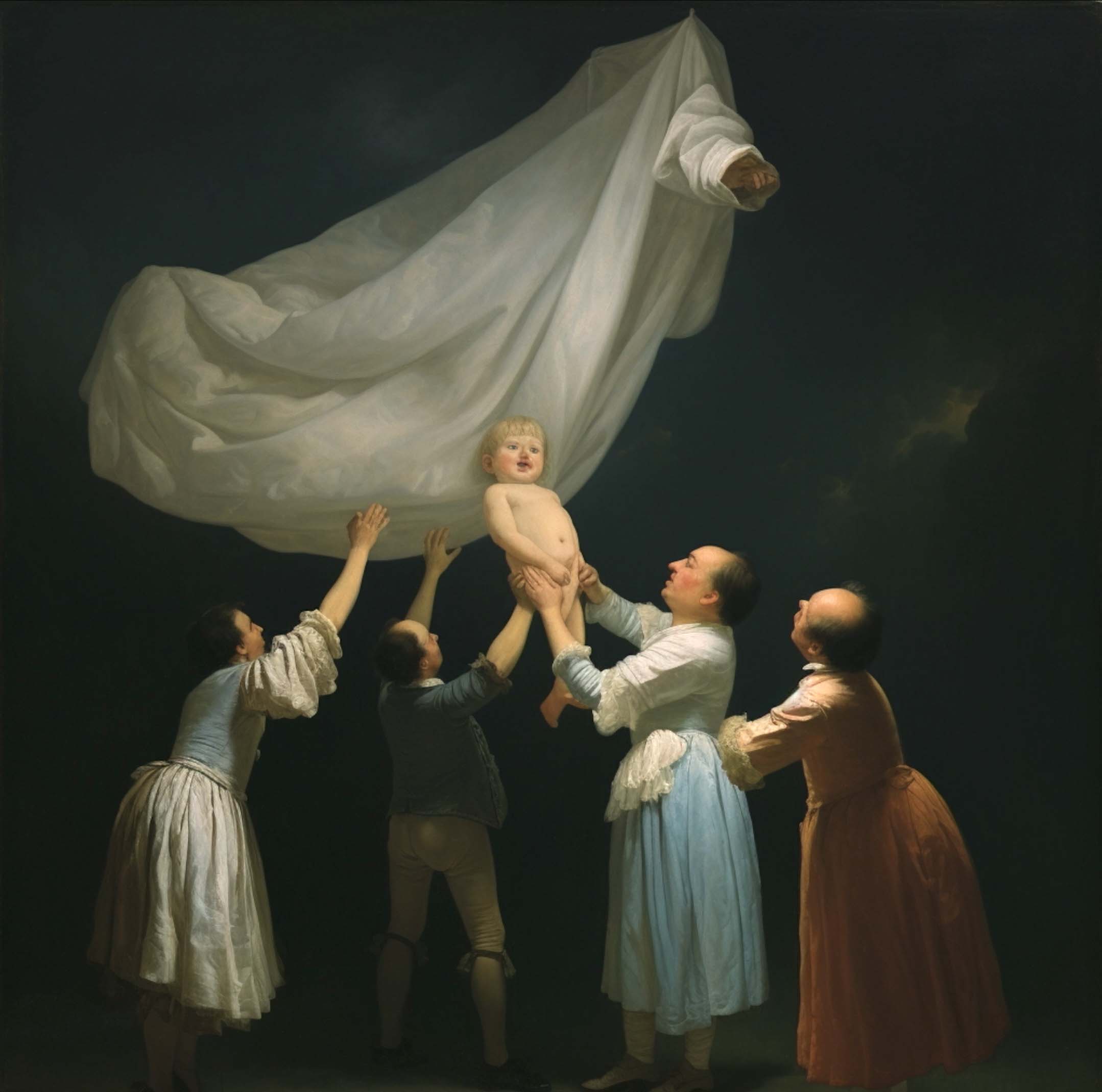


Friday, November 14 — Friday, December 19 at 7:00 pm
Opening Reception: Friday, November 14, 2025, 7 to 10pm
Artist's Talk: Friday, November 14, 2025, 7pm
"It's something like this where you have energy, light, and unidentified waves...it is in that kind of storm that a society builds or loses itself. It would be of utmost importance that these craftsmen of Sight could discover a gimmick akin to perspective to catch the Seven Dimensions."
— Roberto Matta, discussing his paintings in Matta 85 by Chris Marker
"If I seem to be verging on superstition please recall that the images we make are part of our minds; they are living organisms that carry on our mental lives for us, darkly, whether we pay them any mind of not."
— Hollis Frampton, "The Withering Away of the State of the ART," 1974
The Storm in the Painting presents a series of video works by Barbara Lattanzi, produced over the past two years and utilizing — with the exception of one work — generative AI processes to create animations. While these specific generative processes are her new focus, Lattanzi's use of them extends her longtime investigation of the "sorceries of coding." As she explains,
"Although obviously not the result of painterly mark-making, these animations emerged as material artifacts of invisible processes every bit as real as the eye-hand coordination of the painter, and every bit as deliberate and signifying as the intentional signs that take shape across the brushstrokes of a painted canvas."
An analogy (as Lattanzi has written elsewhere) for the deliberate experimentation with generative AI may be the historical example of analog video feedback, whose spontaneous patterns and unanticipated outcomes appear at once like a magical portal into the dynamics of a self-organizing, nonlinear system.

At the same time, literal canvas painting also remains a useful analogy—a process that may exist in the mind's eye but is transformed through the utility of brushstrokes on canvas, whereby the artist intends one thing while the work may intend something else altogether. The painting—like the electronic panoply of images—appears to tell the artist what it wants to be.
In this sense, both the generative video and the (also generative) painting share the key characteristic of unexpected outcomes, wherein the artist must step in and determine what "works" and why. While the exhibition reimagines works by Goya and Matta, it does so within simulations of styles rather than strict replication. Within the generative process, beauty can be revealed or the grotesque and awkward can turn, in a moment, toward a blossoming of beauty.
The deeper analogy with Lattanzi's process may be that of one's brain, whose organizing and perception can be affected and tweaked no less than variations within an AI prompt. As Erik Davis writes, "...the real object of revelation is the mind itself..." If that is the case, where does the ghost end and the machine begin?
Barbara Lattanzi's art-making roots are in Chicago, where she attended the School of the Art Institute, studying with imagist painter Ray Yoshida and attending cinema lectures of Stan Brakhage. Several years later, she moved to Buffalo to study with Hollis Frampton and tony Conrad at Center for Media Study at SUNY Buffalo. During subsequent years in Buffalo, 1980s to mid 90s, she participated in a creative and critical milieu supported by Hallwalls, CEPA, Squeaky Wheel and many other art collectives and community initiatives. More recently, Barbara Lattanzi taught electronic media art (2006—2020) as a tenured professor at New York State College of Ceramics, Alfred University. Her films, videos, internet art, and generative software have been screened and exhibited at such venues as Buffalo International Film Festival, Microscope Gallery (NYC), Rhizome, Whitney Museum of American Art, XCENTRIC 2020 (Barcelona), among many others.